Endometriosis
How to submit an article:
- Registered users can submit any published journal article that has a unique DOI (Digital Object Identifier) name or link to Research Hub.
- For example, you can paste the full DOI link:
https://doi.org/10.1109/5.771073or just the DOI name:10.1109/5.771073into the field above and click submit. - The person who is first to submit a valid article to Research Hub will forever be credited for it, and every article submission earns you +6 Research Points.
Published research studies are articles that present the findings of original research that has undergone a peer-review process and has been made publicly available in scholarly journals, books or other media.

Ziziphus jujube promotes fertility and pregnancy outcomes in Rat model of uterine adhesions
2025 Jan 27 Frontiers in Pharmacology Asgharzadeh F, Attarian M, Khazaei M, Al-Asady AM, Mansoori S, Naimi H, et al.
Treatment with resulted in a significant reduction in uterine tissue fibrosis, positive outcomes in embryonic development, pregnancy rates, and pregnancy outcomes, as well as inhibition of formation of extra-uterine adhesion bands to internal organs.
Animal Study Pregnancy Uterine Adhesion Endometriosis Jujube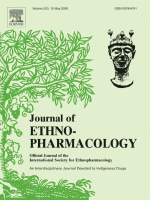
Potential Mechanisms of Guizhi Fuling Wan in Treating Endometriosis: An Analysis Based on TCMSP and DisGeNET Databases
2024 Jul Journal of Ethnopharmacology Yee JL, Huang CY, Yu YC, Huang SJ
Systematic Review Endometriosis Gui Zhi Fu Ling WanGuizhi Fuling Wan, a traditional Chinese herbal formula, can inhibit endometriosis growth and enhance the effects of western medicines used to treat the condition.
Fusobacterium infection facilitates the development of endometriosis through the phenotypic transition of endometrial fibroblasts
2023 Jun 14 Science Translational Medicine Muraoka A, Suzuki M, Hamaguchi T, Watanabe S, Iijima K, Murofushi Y, et al.
Activation of the transforming growth factor-β (TGF-β) signaling pathway induced by infection leads to the formation of TAGLN-positive myofibroblasts, which contribute to the development of endometriosis. Antibiotic treatment shows promise in preventing and reducing endometriotic lesions.
Clinical Study Endometriosis
Green Tea and Benign Gynecologic Disorders: A New Trick for An Old Beverage?
2023 Mar 16 Nutrients Hazimeh D, Massoud G, Parish M, Singh B, Segars J, Islam MS
Review Article Green Tea Period PainGreen tea helps alleviate symptoms in multiple benign gynecological disorders, primarily due to a compound called Epigallocatechin-3-gallate.
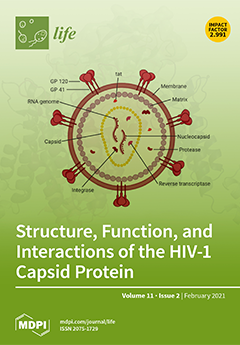
The Role of Dietary Fats in the Development and Treatment of Endometriosis
2023 Feb 27 Life Marcinkowska A, Górnicka M
Cohort StudyMonounsaturated fats, omega-3 polyunsaturated fatty acids, and a suitable eicosapentaenoic acid to arachidonic acid ratio can be used in diet therapy to improve quality of life by reducing pain and inflammation.
Research insights are moderated by the Research Hub team and offer an at-a-glance overview of interesting research findings.

2024 Journal of Ethnopharmacology
Guizhi Fuling Wan, a traditional Chinese herbal formula, can inhibit endometriosis growth and enhance the effects of western medicines used to treat the condition.
Systematic Review Gui Zhi Fu Ling Wan
Potential Mechanisms of Guizhi Fuling Wan in Treating Endometriosis: An Analysis Based on TCMSP and DisGeNET Databases
Yee JL, Huang CY, Yu YC, Huang SJ

2023 Nutrients
Green tea helps alleviate symptoms in multiple benign gynecological disorders, primarily due to a compound called Epigallocatechin-3-gallate.
Review Article Green Tea Period Pain
Green Tea and Benign Gynecologic Disorders: A New Trick for An Old Beverage?
Hazimeh D, Massoud G, Parish M, Singh B, Segars J, Islam MS

2023 Life
Monounsaturated fats, omega-3 polyunsaturated fatty acids, and a suitable eicosapentaenoic acid to arachidonic acid ratio can be used in diet therapy to improve quality of life by reducing pain and inflammation.
Cohort Study
The Role of Dietary Fats in the Development and Treatment of Endometriosis
Marcinkowska A, Górnicka M
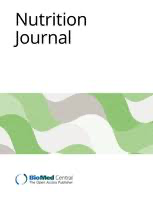
2022 Nutrition Journal
Higher consumption of dairy foods relates to a decreased risk of endometriosis, while increased intake of red meat and certain fats elevates the risk.
Systematic Review Red Meat
Food groups and nutrients consumption and risk of endometriosis: a systematic review and meta-analysis of observational studies
Arab A, Karimi E, Vingrys K, Kelishadi MR, Mehrabani S, Askari G
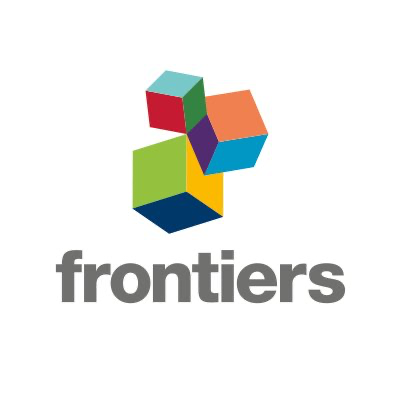
2022 Frontiers in Medicine
Endometriosis, a prevalent gynecological disease, may arise due to changes in the female genital system's development during a crucial fetal life window.
Review Article
New Insights in Pathogenesis of Endometriosis
Signorile PG, Viceconte R, Baldi A
Review Articles
Review articles summarise and critically evaluate the current state of research on a specific topic or field by synthesising multiple primary research studies.

Potential Mechanisms of Guizhi Fuling Wan in Treating Endometriosis: An Analysis Based on TCMSP and DisGeNET Databases
2024 Jul Journal of Ethnopharmacology Yee JL, Huang CY, Yu YC, Huang SJ
Systematic Review Endometriosis Gui Zhi Fu Ling WanGuizhi Fuling Wan, a traditional Chinese herbal formula, can inhibit endometriosis growth and enhance the effects of western medicines used to treat the condition.

Green Tea and Benign Gynecologic Disorders: A New Trick for An Old Beverage?
2023 Mar 16 Nutrients Hazimeh D, Massoud G, Parish M, Singh B, Segars J, Islam MS
Review Article Green Tea Period PainGreen tea helps alleviate symptoms in multiple benign gynecological disorders, primarily due to a compound called Epigallocatechin-3-gallate.
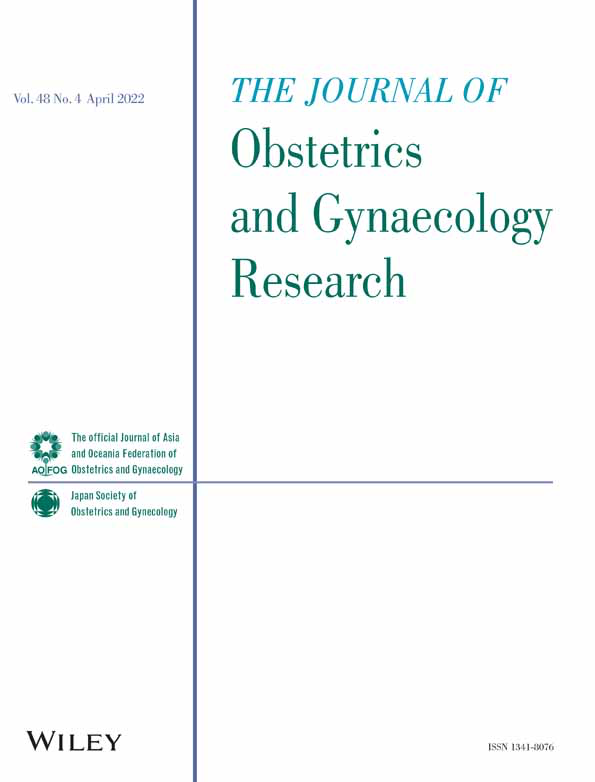
New concepts on the etiology of endometriosis
2023 Feb 06 Journal of Obstetrics and Gynaecology Research Cousins FL, McKinnon BD, Mortlock S, Fitzgerald HC, Zhang C, Montgomery GW, et al.
Recent developments include the identification of over 40 genetic risk factors, the role of retrograde menstruation in the transfer of endometrial stem/progenitor cells, insights into the glandular structure through lineage tracing and tissue clearing microscopy, identification of somatic mutations, including cancer driver genes, in normal and eutopic endometrium, exploration of methylome sequencing for gene regulation, single-cell RNA sequencing for transcriptome analysis, and the use of endometrial epithelial organoid cultures for studying endometriosis, offering potential for personalized medicine.
Experimental Study Review Article Endometriosis
Food groups and nutrients consumption and risk of endometriosis: a systematic review and meta-analysis of observational studies
2022 Sep 22 Nutrition Journal Arab A, Karimi E, Vingrys K, Kelishadi MR, Mehrabani S, Askari G
Systematic Review Meta-Analysis Red MeatHigher consumption of dairy foods relates to a decreased risk of endometriosis, while increased intake of red meat and certain fats elevates the risk.

New Insights in Pathogenesis of Endometriosis
2022 Apr 28 Frontiers in Medicine Signorile PG, Viceconte R, Baldi A
Review Article Theoretical ArticleEndometriosis, a prevalent gynecological disease, may arise due to changes in the female genital system's development during a crucial fetal life window.
Clinical Trials
Clinical trials are research studies that involve people and are conducted to evaluate the safety and efficacy of new treatments or interventions, such as drugs, medical devices, or behavioural therapies.
Study Protocols
Published study protocols are detailed plans that outline the objectives, methodology, statistical analyses, and organisation of a research study that have been made publicly available for others to review and use as a reference.

The effectiveness of a modified Gui Zhi Fu Ling Wan formulation (Gynoclear™) for the treatment of endometriosis: a study protocol for a placebo-controlled, double-blind, randomised controlled trial
2021 Apr 21 Trials Armour M, Al-Dabbas MA, Ee C, Smith CA, Ussher J, Arentz S, et al.
Study Protocol Endometriosis Gui Zhi Fu Ling WanGynoclear™, a formulation of six herbs, could potentially reduce the severity and duration of pain and other symptoms associated with endometriosis.
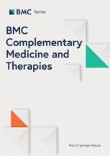
Efficacy of acupuncture on pelvic pain in patients with endometriosis: study protocol for a randomized, single-blind, multi-center, placebo-controlled trial
2018 Jun 07 BMC Complementary Medicine and Therapies Liang R, Li P, Peng X, Xu L, Fan P, Peng J, et al.
The study will compare the effectiveness and safety of acupuncture with comfort needles on pelvic pain related to endometriosis in the hope of providing significant evidence for using acupuncture on pelvic pain related to endometriosis.
Study ProtocolPresentation Slides

Systematic Review
Guizhi Fuling Wan, a traditional Chinese herbal formula, can inhibit endometriosis growth and enhance the effects of western medicines used to treat the condition.
Yee JL, Huang CY, Yu YC, Huang SJ

Review Article
Green tea helps alleviate symptoms in multiple benign gynecological disorders, primarily due to a compound called Epigallocatechin-3-gallate.
Hazimeh D, Massoud G, Parish M, Singh B, Segars J, Islam MS

Cohort Study
Monounsaturated fats, omega-3 polyunsaturated fatty acids, and a suitable eicosapentaenoic acid to arachidonic acid ratio can be used in diet therapy to improve quality of life by reducing pain and inflammation.
Marcinkowska A, Górnicka M

Systematic Review
Higher consumption of dairy foods relates to a decreased risk of endometriosis, while increased intake of red meat and certain fats elevates the risk.
Arab A, Karimi E, Vingrys K, Kelishadi MR, Mehrabani S, Askari G

Review Article
Endometriosis, a prevalent gynecological disease, may arise due to changes in the female genital system's development during a crucial fetal life window.
Signorile PG, Viceconte R, Baldi A

Review Article
Dietary supplements are found to be a promising complementary treatment for endometriosis, thanks to their anti-inflammatory, anti-oxidant, and immune modulatory characteristics.
Yalçın Bahat P, Ayhan I, Üreyen Özdemir E, İnceboz Ümit, Oral E

Cohort Study
The majority of reproductive age women with endometriosis in Taiwan use traditional Chinese medicine, specifically Gui Zhi Fu Ling Wan, to relieve related symptoms.
Ruei-Chi Fang, Yueh-Ting Tsai, Jung-Nien Lai, Chia-Hao Yeh, Chien-Tung Wu
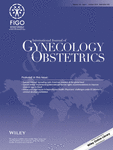
Systematic Review
Numerous complementary treatments have been used to alleviate the symptoms of endometriosis, but only acupuncture has demonstrated a significant improvement in outcomes.
Ticiana A.A. Mira, Mariana M. Buen, Murilo G. Borges, Daniela A. Yela, Cristina L. Benetti-Pinto
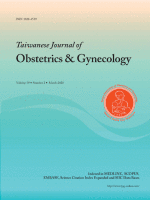
Animal Study
Combining traditional Chinese medicine Guizhi Fuling Wan with western hormonal therapies can potentially reduce their individual effectiveness in treating endometriosis.
Chen CC, Huang CY, Shiu LY, Yu YC, Lai JC, Chang CC, Fu CF, Huang SJ
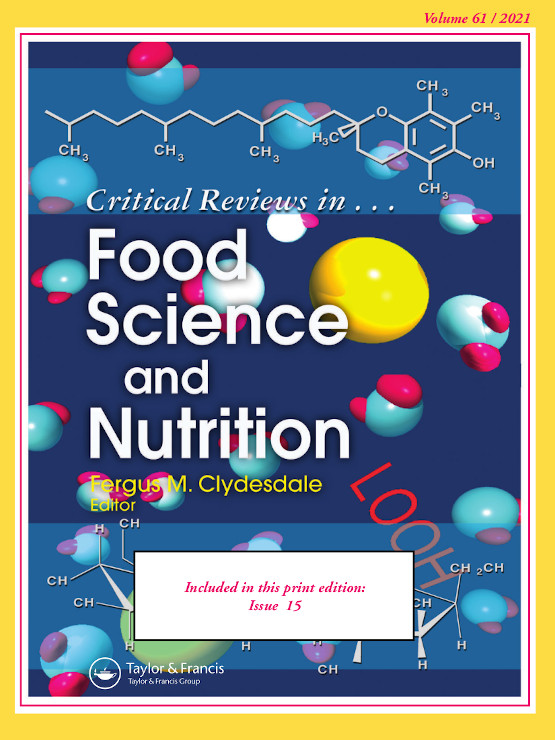
Review Article
Green tea and its component EGCG, demonstrate potential as a treatment for endometriosis by inhibiting growth, invasion, adhesion and angiogenesis.
Chen X, Man GCW, Hung SW, Zhang T, Fung LWY, Cheung CW, Chung JPW, Li TC, Wang CC

Systematic Review
Caffeine consumption does not seem to be associated with an increased risk of endometriosis overall, higher caffeine intake may be linked to an elevated risk, and more research is required to understand this potential dose-dependent relationship and account for unidentified biases.
Kechagias KS, Katsikas Triantafyllidis K, Kyriakidou M, Giannos P, Kalliala I, Veroniki AA, Paraskevaidi M, Kyrgiou M
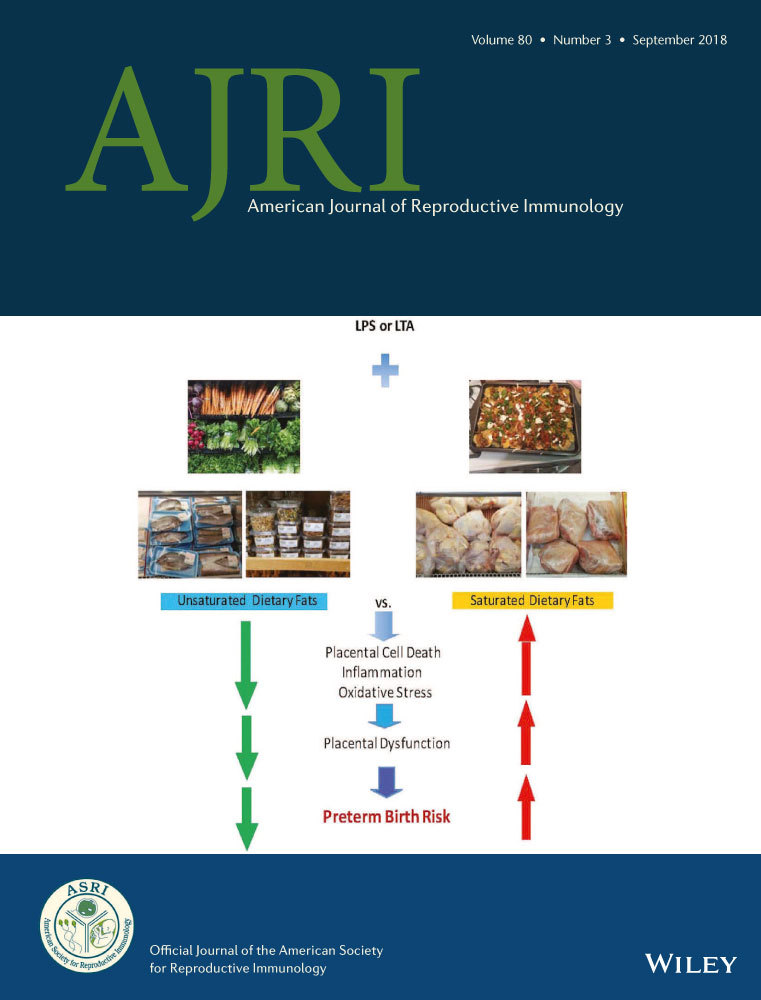
Clinical Study
Chlamydia trachomatis infection, particularly when causing fallopian tube obstruction, may decrease the risk of developing endometriosis in women.
Khan KN, Fujishita A, Kitajima M, Ishimaru T, Ogawa K, Koshiba A, Mori T, Kitawaki J
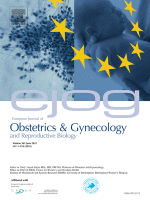
Clinical Study
Administering a broad-spectrum antibiotic with or without gonadotropin releasing hormone agonist reduced uterine infection and decreased tissue inflammation, cell proliferation, and angiogenesis in women with endometriosis.
Khan KN, Fujishita A, Muto H, Masumoto H, Ogawa K, Koshiba A, Mori T, Itoh K, Teramukai S, Matsuda K, Nakashima M, Kitawaki J

Review Article
Green tea and its chief bioactive component have the potential to improve certain female reproductive disorders such as endometriosis, polycystic ovary syndrome, and dysmenorrhea.
Kamal DAM, Salamt N, Zaid SSM, Mokhtar MH

Study Protocol
Gynoclear™, a formulation of six herbs, could potentially reduce the severity and duration of pain and other symptoms associated with endometriosis.
Armour M, Al-Dabbas MA, Ee C, Smith CA, Ussher J, Arentz S, Lawson K, Abbott J

Adding acupuncture to conventional therapy may decrease the subsequent endometriosis risk in female rheumatoid arthritis patients.
Chen Wei-Jen, Livneh Hanoch, Hsu Chien-Hui, Hu Ying-To, Lai Ning-Sheng, Guo How-Ran, Tsai Tzung-Yi
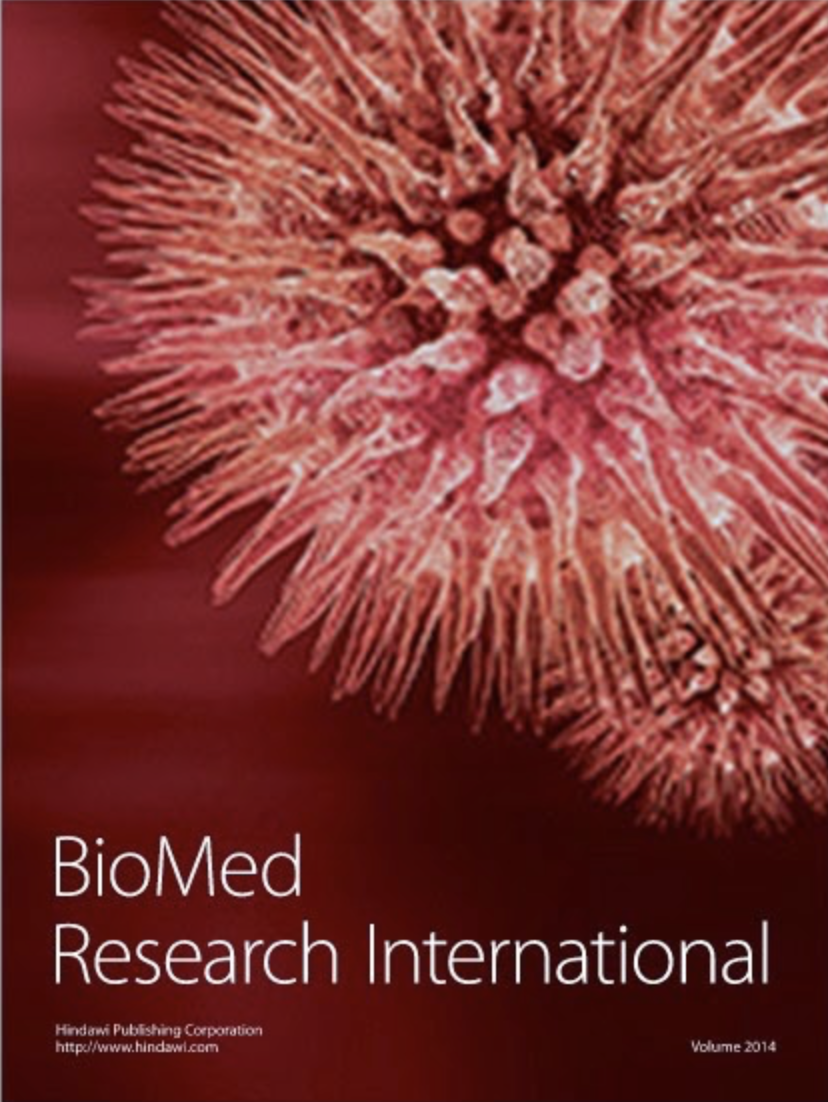
Systematic Review
Endometriosis and Adenomyosis can have impact on miscarriage risk in pregnancy.
Yangxue Huang, Xianhong Zhao, Yiyuan Chen, Jie Wang, Weilin Zheng, Lixing Cao

Experimental Study
The ethanol extract of avocado seeds demonstrates an anti-endometriosis effect, potentially providing a new alternative treatment for endometriosis.
Minko Essono S, Mvondo MA, Ngadjui E, Kemka Nguimatio FX, Watcho P

Systematic Review
Acupuncture showed a significant benefit in pain reduction for women with endometriosis as compared with placebo.
Mira, T.A., Buen, M.M., Borges, M.G., Yela, D.A. and Benetti-Pinto, C.L.
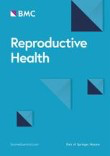
Review Article
Endometriosis, often seen as benign, is linked to infertility and metastatic cancer, and shows different risk factors and treatment responses in Asian and European-American women.
Dai Y, Li X, Shi J, Leng J
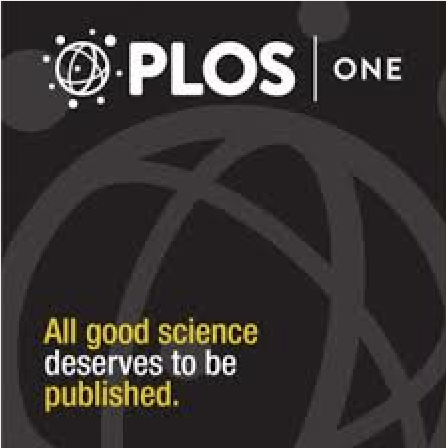
Systematic Review
The current literature suggests that acupuncture reduces endometriosis-related pain and serum CA-125 levels, regardless of the control intervention used.
Xu Y, Zhao W, Li T, Zhao Y, Bu H, Song S
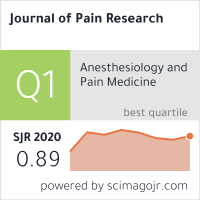
Review Article
Acupuncture could be tried as a complement in the treatment of pain in endometriosis as it is an overall safe treatment.
Lund I, Lundeberg T

Systematic Review
Acupuncture shows potential for reducing dysmenorrhoea scores in endometriosis patients.
Zhu X, Hamilton KD, McNicol ED
Executive Summary
Write an executive summary in the form of a blog article on the topic of "Research into Chinese medicine treatment for Endometriosis" summarising the research below and using language that can be easily understood by patients and avoiding medical jargon using a professional and caring tone of voice.
Write an executive summary in the form of a blog article on the topic of "Researched Chinese medicine treatments for Endometriosis" summarising the research below in an objective and easy to understand way, and using language that can be easily understood by patients. Group the article into Chinese medicine treatments first, followed by nutrition and other treatments. Avoid using medical jargon and use a professional and caring tone of voice.
Write me a concise but easy to understand executive summary on the topic of "Chinese medicine treatments for Endometriosis" based on the following research that I will give you. Your summary should be 2 paragraphs long in Australian English spelling and include references to the studies.
A Systematic Review published in 2024 in the journal Journal of Ethnopharmacology found that Guizhi Fuling Wan, a traditional Chinese herbal formula, can inhibit endometriosis growth and enhance the effects of western medicines used to treat the condition. In the methodology, a bibliographic assessment of publications on "Guizhi Fuling Wan" and "endometriosis" indexed in international and chinese databases was conducted. Out of these, five pre-clinical studies and thirteen clinical were selected. Thereafter, targeted molecules of each herb in the formula were extracted from a Traditional Chinese Medicine Systems Pharmacology Database and compared with endometriosis-related genes from DisGeNET. To expose potential therapeutic mechanisms of Guizhi Fuling Wan, pathway and gene ontology analyses were performed using David Bioinformatics Resources. In the results discussion, it was found that both pre-clinical and clinical studies suggested that Guizhi Fuling Wan can inhibit the growth of endometriotic lesions by modulating immunity, apoptosis-regulating molecules, and angiogenesis-associated factors, while also enhancing the effects of western medicines for endometriosis. The formula likely achieves this through its impact on key pathways involved in diabetes complications, Kaposi sarcoma-associated herpesvirus infection, human cytomegalovirus infection, and atherosclerosis, which all regulate inflammation, angiogenesis, and apoptosis. The review also notes a strong connection between endometriosis and abnormal inflammatory, angiogenic, and apoptotic activities.
A Review Article published in 2023 in the journal Nutrients found that Green tea helps alleviate symptoms in multiple benign gynecological disorders, primarily due to a compound called Epigallocatechin-3-gallate. The paper reviews the role of the compound Epigallocatechin-3-gallate found in green tea, and its effects on various benign gynecological conditions. The compound is noted for its antioxidant and prooxidant qualities, allowing it to interact with multiple cellular pathways that are crucial for disease pathogenesis. The studied conditions include uterine fibroids, endometriosis, dysmenorrhea, adenomyosis, menopause, and polycystic ovary syndrome. The research accounts for the specific mechanisms through which the compound might affect each condition, such as anti-fibrotic, anti-angiogenic, and pro-apoptotic mechanisms. The results suggest that green tea consumption can lead to improved symptom management in these disorders. It was found to lessen the intensity of symptoms associated with uterine fibroids and endometriosis, by invoking anti-fibrotic, anti-angiogenic, and pro-apoptotic mechanisms. It also helped manage pain linked with dysmenorrhea and adenomyosis through reducing uterine contractility and widely felt pain. Additionally, it showed efficacy in weight and osteoporosis control during menopause, and showed potential benefits in managing polycystic ovary syndrome. However, claims regarding its influence on fertility were deemed controversial.
A Cohort Study published in 2023 in the journal Life found that Monounsaturated fats, omega-3 polyunsaturated fatty acids, and a suitable eicosapentaenoic acid to arachidonic acid ratio can be used in diet therapy to improve quality of life by reducing pain and inflammation. The risk of endometriosis may increase with a higher consumption of products rich in saturated fats, especially palmitic acid and trans-unsaturated fatty acids. Monounsaturated fats and omega-3 polyunsaturated fatty acids may likely be connected with a lower risk of developing endometriosis and with reductions in the severity of disease.
A Systematic Review published in 2022 in the journal Nutrition Journal found that Higher consumption of dairy foods relates to a decreased risk of endometriosis, while increased intake of red meat and certain fats elevates the risk. The study is a systematic review and meta-analysis of observational studies, evaluating the relationship between dietary intakes of specific food groups (dairy, fats, fruits, vegetables, legumes, and meat) and endometriosis risk. The databases PubMed, Scopus, and ISI Web of Science were systematically searched until September 2022 to collect data. To measure the effect size and corresponding confidence intervals, the inverse variance-weighted fixed-effect method was used. There were eight publications included in this study, ranging from a sample size of 156 to 116,607, comprising five cohorts and three case-control studies. The results indicated a link between the risk of endometriosis and dietary intake. A higher intake of total dairy products was associated with a decreased risk, but there was no such association found with either low or high-fat dairy, cheese or milk. Conversely, a higher consumption of red meat, trans fatty acids, and saturated fatty acids showed an association with an increased risk of endometriosis. The results highlight differing associations between dietary practices and endometriosis risk, hinting at the role of diet in the incidence and progression of the condition.
A Review Article published in 2022 in the journal Frontiers in Medicine found that Endometriosis, a prevalent gynecological disease, may arise due to changes in the female genital system's development during a crucial fetal life window. The research involved an extensive review and analysis of recent literature on various proposed pathogenic mechanisms responsible for endometriosis. Central to the methodology was a detailed inspection of the embryologic theory of endometriosis pathogenesis. This theory suggests that an aberration in the developmental program of the female genital system in the fetus could prompt the development of endometriosis. The discussions highlight the findings of both the research group that authored this work as well as other research groups. These studies have all revealed potential signs of a change in the careful regulation of the female genital system's development during a particularly vital time in fetal development. This alteration, they propose, might set the stage for endometriosis to emerge later in life. While the other traditionally accepted theories, like retrograde menstruation and coelomic metaplasia, are acknowledged, specific emphasis is given to the implications of the embryologic theory.
A Review Article published in 2022 in the journal Acta Biomedica found that Dietary supplements are found to be a promising complementary treatment for endometriosis, thanks to their anti-inflammatory, anti-oxidant, and immune modulatory characteristics. The researchers conducted a comprehensive literature review and synthesized the effects of various dietary supplements. The list of supplements includes vitamin D, zinc, magnesium, omega 3, propolis, quercetin, curcumin, N-acetylcysteine, probiotics, resveratrol, alpha lipoic acid, vitamin C, vitamin E, selenium, and epigallocatechin-3-gallate. These were studied due to their known anti-inflammatory, anti-oxidant, anti-proliferative, and immune modulatory characteristics. In terms of discussion on the results, the findings from the comprehensive literature review, encompassing in vitro, animal and human studies, show that there might be significant potential for dietary supplements as a complementary treatment to conventional therapy for endometriosis. Each supplement displayed attributes contributing to the mitigation of endometriosis symptoms, whether it was through anti-inflammatory means, antioxidant effects, immune modulation or their anti-proliferative properties. Despite variations between different kinds of supplements, the overall consensus indicates these function as a helpful add-on in managing the disease.
A Cohort Study published in 2022 in the journal Frontiers in Pharmacology found that The majority of reproductive age women with endometriosis in Taiwan use traditional Chinese medicine, specifically Gui Zhi Fu Ling Wan, to relieve related symptoms. The methodology of this study involved analyzing the use of TCM among women with endometriosis in Taiwan. Researchers evaluated the usage, frequency of service, and the specific Chinese herbal products prescribed for endometriosis using a randomly sampled cohort of 1,000,000 beneficiaries from the National Health Insurance Research Database. In terms of results, it was found that most women with endometriosis used TCM in dealing with their symptoms. These women were more likely to seek out TCM treatment than those without symptoms. Gui-Zhi-Fu-Ling-Wan, a Cinnamon Twig and Poria Pill known for its sedative and anti-inflammatory properties, was the most commonly prescribed Chinese herbal formula. This specific TCM plays a significant role in treating the discomfort associated with endometriosis, showing a preference towards natural remedies over conventional ones.
A Systematic Review published in 2022 in the journal International Journal of Gynecology & Obstetrics found that Numerous complementary treatments have been used to alleviate the symptoms of endometriosis, but only acupuncture has demonstrated a significant improvement in outcomes. The complementary interventions studied were acupuncture, exercise, electrotherapy, and yoga. All were inconclusive in affirming benefit, but demonstrated a positive trend in the treatment of symptoms of endometriosis. Meta-analysis of acupuncture showed a significant benefit in pain reduction as compared with placebo.
A Animal Study published in 2022 in the journal Taiwanese Journal of Obstetrics and Gynecology found that Combining traditional Chinese medicine Guizhi Fuling Wan with western hormonal therapies can potentially reduce their individual effectiveness in treating endometriosis. In this study, endometriosis was induced in mice. This was achieved by suturing endometrial tissue onto the peritoneal wall of the subjects. The mice were then treated with varying combinations of Guizhi Fuling Wan (GFW), a traditional Chinese medicine, and current western hormonal therapies for a period of 28 days. The results show that the traditional Chinese medicine Guizhi Fuling Wan (GFW), hormonal therapies, and combinations of these two were able to inhibit the development of endometriosis. They also observed that these treatments, either alone or in combination, could inhibit the expression of Intercellular Adhesion Molecule 1 (ICAM-1) and Vascular Endothelial Growth Factor (VEGF). These agents could also reduce the population of macrophages in the peritoneal fluid while enhancing the B-cell population. However, when GFW was combined with hormonal therapies, it was observed that the efficiency of each agent individually was potentially reduced.
A Review Article published in 2021 in the journal Critical Reviews in Food Science and Nutrition found that Green tea and its component EGCG, demonstrate potential as a treatment for endometriosis by inhibiting growth, invasion, adhesion and angiogenesis. The main research methodology of this work is a narrative review. The paper comprehensively collects and reviews various preclinical studies that propose the use of green tea as a potential treatment for endometriosis. These studies explore the diverse biological properties and activities of green tea and its major bioactive component, (-)-epigallocatechin gallate, including anti-angiogenic, anti-proliferation, anti-metastasis, and apoptosis induction functions. Different potential mechanisms used by green tea to inhibit the growth of endometriosis are considered, such as its effects on inflammation, oxidative stress, invasion, adhesion, and apoptosis. The discussion of the reviewed data highlights the potential therapeutic effects of green tea acting on different molecular and cellular mechanisms in endometriosis. The researchers keenly discussed how green tea exhibited an inhibitory effect on the disease through multiple avenues, including reducing inflammation and oxidative stress, preventing tumor invasion and adhesion, promoting apoptosis (cell death), and limiting angiogenesis (the development of new blood vessels) - all these factors contribute to the growth and progression of endometriosis. The discussion elaborates on the significant roles and wider implications of these processes in understanding and potentially treating endometriosis.
A Systematic Review published in 2021 in the journal Nutrients found that Caffeine consumption does not seem to be associated with an increased risk of endometriosis overall, higher caffeine intake may be linked to an elevated risk, and more research is required to understand this potential dose-dependent relationship and account for unidentified biases. This systematic review and meta-analysis investigated the relationship between caffeine consumption and endometriosis risk. Analyzing ten studies, including five cohort and five case-control studies, the research found no significant overall association between caffeine intake and endometriosis risk compared to women with low or no caffeine consumption. However, when stratified by caffeine intake levels, high caffeine consumption was linked to an increased risk of endometriosis, while moderate intake showed no significant association. The study concludes that while caffeine consumption as a whole does not seem to be associated with heightened endometriosis risk, a dose-dependent link may exist, warranting further research to understand this potential relationship and account for any unidentified biases.
A Clinical Study published in 2021 in the journal American Journal of Reproductive Immunology found that Chlamydia trachomatis infection, particularly when causing fallopian tube obstruction, may decrease the risk of developing endometriosis in women. Methodology: The study is a retrospective case-controlled cohort study focusing on 539 women who had laparoscopic surgery for varied reasons between January 2003 and June 2010. The study excluded women having ectopic pregnancy, chromosomal abnormality, primary amenorrhea, perimenopausal women and those with uterine anomaly. Endometriosis and tubal patency were diagnosed through laparoscopic inspection, histopathology, HSG or laparoscopic chromopertubation test. Furthermore, Chlamydia infection was verified using RT-PCR and a serological test. Results: Out of the 207 women enrolled, 86 women were confirmed to have Chlamydia infection. The study discovered a significant decrease in the occurrence of endometriosis amongst women with Chlamydia infection, when compared to those without. The decreased rate of endometriosis was also found in Chlamydia-infected women with patent tubes. It was derived from the study that a previous history of Chlamydia infection could potentially decrease the risk of endometriosis, independent of factors like age, menstrual status, tubal patency, and parity.
A Clinical Study published in 2021 in the journal European Journal of Obstetrics & Gynecology and Reproductive Biology found that Administering a broad-spectrum antibiotic with or without gonadotropin releasing hormone agonist reduced uterine infection and decreased tissue inflammation, cell proliferation, and angiogenesis in women with endometriosis. This research was a prospective non-randomized observational study which collected endometrial samples during surgery from both a control group and a group of women suffering from endometriosis. These groups were treated with levofloxacin or a gonadotropin releasing hormone agonist before surgery. The samples were subjected to a polymerase chain reaction amplification of bacteria and followed by an immunohistochemical analysis using various antibodies associated with plasma cells, macrophages, cell proliferation, and vascular cells. Analyzing the metagenome assay of the 16S rDNA revealed that treatment with levofloxacin, or a combination of Gonadotropin releasing hormone and levofloxacin had effectively lessened several major bacterial genera compared with the untreated group. Particularly in women suffering from endometriosis, such treatment significantly reduced the presence of certain bacteria. A Cochran-Mantel-Haenszel test indicated that the occurrence rate of chronic endometritis decreased following treatment involving levofloxacin and the gonadotropin releasing hormone. The findings were consistent with considerable reduced infiltration of certain stained macrophages, cell proliferation and micro-vessel density in both endometria and endometriotic lesions. These improvements were visually confirmed with improvements in ovarian endometrioma morphology.
A Review Article published in 2021 in the journal Molecules found that Green tea and its chief bioactive component have the potential to improve certain female reproductive disorders such as endometriosis, polycystic ovary syndrome, and dysmenorrhea. The study reviews the beneficial effects of green tea and its major bioactive component on female reproductive disorders, focusing on endometriosis, polycystic ovary syndrome (PCOS), and dysmenorrhea. The research highlights the role of catechins, phenolic compounds found in tea, which have been known for their health benefits due to their high antioxidative properties. The green tea or its derivative works on endometriosis through anti-angiogenic, anti-fibrotic, anti-proliferative, and proapoptotic mechanisms. In the discussion of results, it was found that green tea not only enhances ovulation and reduces cyst formation in PCOS, but it also ameliorates generalised hyperalgesia, reduces plasma corticosterone levels, and mitigates uterine contractility in dysmenorrhea. Despite the promising findings, the study acknowledges the need for more comprehensive clinical trials to fully translate these findings into clinical practice.
A Study Protocol published in 2021 in the journal Trials found that Gynoclear™, a formulation of six herbs, could potentially reduce the severity and duration of pain and other symptoms associated with endometriosis. The methodology consisted of a randomized, double-blind, placebo-controlled trial with a minimum of 90 participants across Australia who have confirmed endometriosis and moderate or greater pelvic pain. These participants were equally divided to receive either Gynoclear™ or a placebo. Gynoclear's active ingredients consist of six herbs, namely Safflower, Chinese cinnamon, Hoelen, Tree peony, Peony, and Red sage. The participants were required to document their pain experiences for a total of five months, which included a month of screening, two months of treatment, and a month post-treatment. The main variable being studied was the change in endometriosis-related pain. The results of the study aimed to establish the efficacy of Gynoclear™ in reducing endometriosis-related pain and other symptoms. Secondary outcomes encompassed change in health-related quality of life, alterations in the use of rescue analgesics, and changes in sexual discomfort and fatigue. The practicality and usefulness of Gynoclear™ intended to serve both healthcare professionals and individuals suffering from endometriosis.
A published in 2021 in the journal Frontiers in Medicine found that Adding acupuncture to conventional therapy may decrease the subsequent endometriosis risk in female rheumatoid arthritis patients. Between 1998 and 2010, female subjects with RA were recruited from a nationwide database (5,736 patients; age ≥20 years). Enrolled patients included 2,407 acupuncture users and 2,407 nonusers randomly selected using propensity scores. The occurrence of endometriosis was recorded through the end of 2012. Cox proportional hazards regression was used to estimate the adjusted hazard ratio (HR) associated with acupuncture use. Results: During the follow-up period, 35 acupuncture users and 94 non-users developed endometriosis, with incidence rates of 2.36 and 4.91 per 1,000 person-years, respectively. Acupuncture use was associated with a 55% lower endometriosis risk. Those who received high intensity acupuncture (≥15 packages) had the greatest benefit. The results of multivariable analysis demonstrated that the use of acupuncture was related to a significantly reduced risk of endometriosis. In the subgroup analysis, the medium- to high-level intensity acupuncture use was found to possibly lessen the risk of having endometriosis for more than 70%. We discovered that the post-rheumatoid arthritis acupuncture use would significantly reduce the risk of endometriosis in a dose-dependent manner.
A Systematic Review published in 2020 in the journal BioMed Research International found that Endometriosis and Adenomyosis can have impact on miscarriage risk in pregnancy. The study analyzed 39 publications involving 697,984 women to assess the impact of endometriosis (EMS) and adenomyosis (AD) on miscarriage risk. Women with EMS showed increased miscarriage risk in spontaneous conception (SC), but similar risk in assisted reproductive technology (ART) compared to tubal infertility. AD was associated with higher miscarriage risk in ART. Sensitivity analyses supported these conclusions. EMS staging did not significantly alter miscarriage risk. Early-stage EMS showed higher early abortion risk. No significant associations were found between EMS and low birthweight, placental abruption, intrauterine growth restriction, or preeclampsia. EMS correlated with higher odds of antepartum hemorrhage, postpartum hemorrhage, preterm birth, placenta praevia, and stillbirth. SUP and DIE were linked to increased miscarriage risk, while OMA showed no significant association. The findings suggest the need for closer monitoring and follow-up for pregnant women with EMS or AD, particularly in early pregnancy. Standardized recording of EMS types, stages, and miscarriage timing is recommended for future studies.
A Experimental Study published in 2020 in the journal Evidence-Based Complementary and Alternative Medicine found that The ethanol extract of avocado seeds demonstrates an anti-endometriosis effect, potentially providing a new alternative treatment for endometriosis. Methodology: The study involved inducing endometriosis in female Wistar rats by grafting uterine fragments onto their peritoneum. Upon successful transplantation, these rats were orally treated with differing doses of an ethanol extract from Lauraceae seeds over a span of 7 days. Key benchmark measures included endometrial implant volume, as well as serum and lesion estradiol and progesterone levels. The study also analyzed the oxidative status of endometriosis lesions and carried out histological analysis of the lesions, uterus, and ovaries. Discussion of Results: The treatment with the ethanol extract of Lauraceae seeds resulted in a decrease in endometrial implant volume and a reduction in both serum levels and lesion levels of estradiol and progesterone. The oxidative status reflected an increased presence of key antioxidants in the endometriosis lesions. Histologically, the endometrium height was reduced, with an increase in the number of antral follicles and corpora lutea, alongside a decrease in luteinized unruptured follicles. Therefore, the study concluded the ethanol extract displayed a pronounced antiendometriosis effect.
A Systematic Review published in 2018 in the journal International Journal of Gynecology & Obstetrics found that Acupuncture showed a significant benefit in pain reduction for women with endometriosis as compared with placebo. The complementary interventions studied were acupuncture, exercise, electrotherapy, and yoga. All were inconclusive in affirming benefit, but demonstrated a positive trend in the treatment of symptoms of endometriosis. Meta-analysis of acupuncture showed a significant benefit in pain reduction as compared with placebo. Numerous complementary treatments have been used to alleviate the symptoms of endometriosis, but only acupuncture has demonstrated a significant improvement in outcomes.
A Review Article published in 2018 in the journal Reproductive Health found that Endometriosis, often seen as benign, is linked to infertility and metastatic cancer, and shows different risk factors and treatment responses in Asian and European-American women. The research studied endometriosis in Chinese women, thoroughly examining genetic and environmental risk factors, diagnosis strategies, treatment methods and their effects. It particularly focused on the presence and impact of various genetic mutations and polymorphisms that may increase endometriosis risk in this demographic. Comparison was drawn between the data from Asian and European-American women, studying the contrast in risk factors and how each group responds to treatment. In analysing their results, researchers discovered endometriosis, while largely viewed as a benign condition, may in fact be a significant cause of infertility and metastatic cancer and has links with immune system function. Furthermore, the comparative study revealed clear distinctions in risk factors and treatment responses between Asian and European-American female populations. Additionally, when examining the efficacy of Western medicine compared to traditional Chinese medicine for treating endometriosis in the Chinese population, noteworthy data were highlighted.
A Systematic Review published in 2017 in the journal PLOS One found that The current literature suggests that acupuncture reduces endometriosis-related pain and serum CA-125 levels, regardless of the control intervention used. Of the 10 studies included, only one pilot study used a placebo control and assessed blinding; the rest used various controls (medications and herbs), which were impossible to blind. The sample sizes were small in all studies, ranging from 8 to 36 patients per arm. The mean difference (MD) in pain reduction (pre- minus post-interventional pain level—measured on a 0–10-point scale) between the acupuncture and control groups was 1.36. Acupuncture had a positive effect on peripheral blood CA-125 levels, as compared with the control groups. Similarly, the effect of acupuncture on clinical effective rate was positive, as compared with the control groups.
A Review Article published in 2016 in the journal Journal of Pain Research found that Acupuncture could be tried as a complement in the treatment of pain in endometriosis as it is an overall safe treatment. Based on the analysis in the presented review, there are grounds to believe that acupuncture can relieve pain in some patients. The effects of acupuncture as a pain-relieving treatment has in various studies been presented as an overall safe alternative treatment with very few and small (harmless) side effects, and furthermore with no effect on the environment. It could therefore also be regarded as a ‘sustainable’ treatment. In the future, studies designed for evaluating effectiveness between different types of treatment strategies, rather than efficacy design would be preferred to analyze treatment effects in individual patients.
A Systematic Review published in 2011 in the journal Cochrane Database of Systematic Reviews found that Acupuncture shows potential for reducing dysmenorrhoea scores in endometriosis patients. Endometriosis is a prevalent gynaecological condition that significantly affects women's lives, often leading to chronic pelvic pain and dysmenorrhoea. However, the current management of pain in endometriosis is inadequate. Acupuncture has been studied in gynaecological disorders, but its effectiveness for pain in endometriosis remains uncertain. Researchers conducted a systematic review to determine the effectiveness and safety of acupuncture for pain in endometriosis. Out of twenty-four identified studies on acupuncture for endometriosis, only one trial met the inclusion criteria. The study showed that acupuncture, particularly auricular acupuncture, may reduce dysmenorrhoea scores and be more effective than Chinese herbal medicine. However, due to the limited evidence from only one study, more well-designed, double-blinded, randomized controlled trials comparing various types of acupuncture with conventional therapies are needed to draw stronger conclusions about acupuncture's efficacy in managing pain in endometriosis.
Moderation Tools
Topic
Sign In
Users not signed in are limited to viewing the 5 most recent items of content.